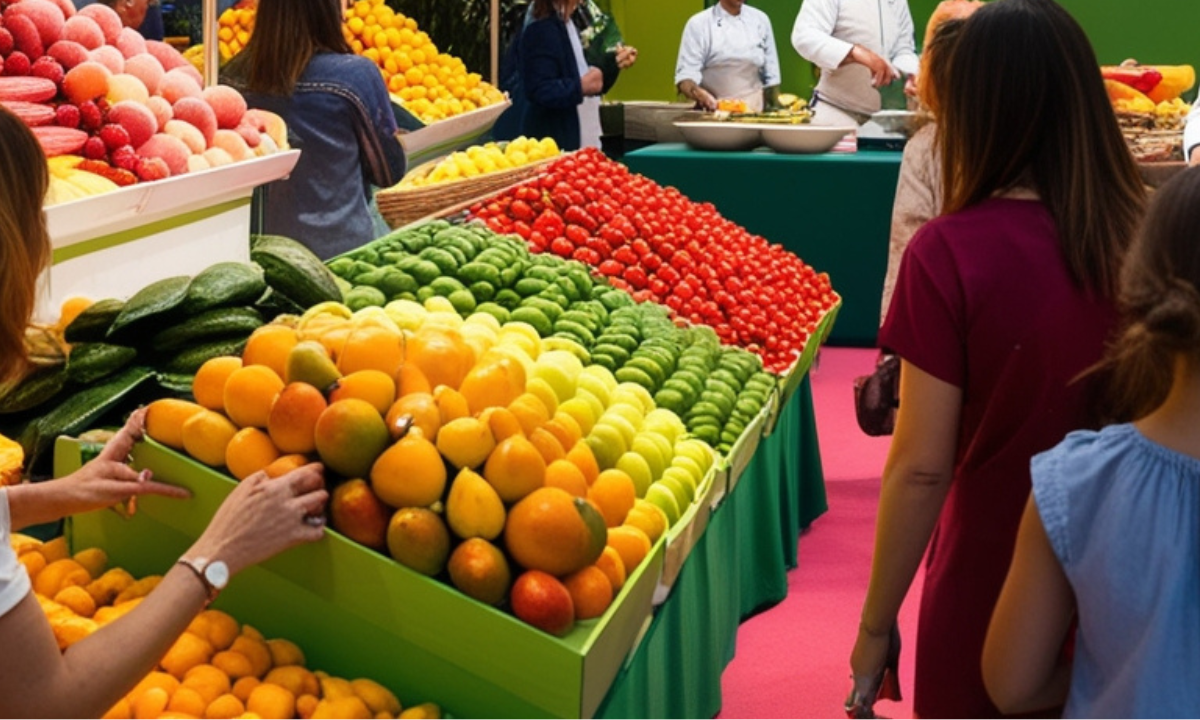Sugar-free baking is more than a trend; it’s a lifestyle choice for those looking to reduce refined sugars, embrace healthier alternatives, or accommodate dietary needs like low-carb or diabetic-friendly eating.
By making thoughtful substitutions, we can enjoy the same sweet satisfaction without refined sugars. This article dives into the best sugar alternatives, how to use them, and practical tips to help you succeed in the kitchen.
Key Takeaways
- Sugar-free baking allows you to enjoy treats without the effects of refined sugar.
- Choosing the right sugar substitute impacts flavor, texture, and baking results.
- Natural sweeteners add unique tastes while offering health benefits.
- Adjustments in recipes ensure that sugar-free baked goods have optimal texture.
- Sugar-free baking can be easy, fun, and rewarding with the right ingredients.
What is Sugar-Free Baking?
Sugar-free baking involves preparing baked goods without refined sugars. Instead, natural and artificial sugar alternatives are used to provide sweetness without the calories, glycemic impact, or health effects of traditional sugars. By choosing the right substitute, you can create desserts that are delicious, healthier, and compatible with dietary needs.
The Role of Sugar in Baking
Traditional sugar isn’t just a sweetener—it also affects the texture, color, and structure of baked goods. Sugar contributes to browning, moisture, and the consistency of treats like cookies and cakes. When baking without it, these qualities need to be compensated for by choosing ingredients that maintain the desired outcome.
Types of Sugar Alternatives
To replace sugar effectively, it’s essential to understand the main types of alternatives available. These range from natural sweeteners, like coconut sugar and honey, to low-calorie or zero-calorie artificial options, such as erythritol and stevia.
| Sugar Substitute | Type | Sweetness Level Compared to Sugar | Best Uses |
|---|---|---|---|
| Coconut Sugar | Natural | Slightly less sweet | Baked goods, cookies |
| Erythritol | Artificial | 70% as sweet | Keto-friendly recipes |
| Stevia | Natural | 200-300 times sweeter | Smoothies, drinks, puddings |
| Maple Syrup | Natural | Slightly less sweet | Cakes, muffins |
| Allulose | Artificial | Similar to sugar | Brownies, muffins, ice cream |
| Monk Fruit | Natural | 150-200 times sweeter | Smoothies, low-calorie desserts |
Each substitute has unique properties. Some are sweeter than sugar, meaning you need less, while others may need additional adjustments to achieve similar textures and flavors in your recipes.
Natural Sweeteners vs. Artificial Sweeteners
Natural sweeteners are derived from plants and fruits, offering a more wholesome alternative. Coconut sugar, maple syrup, honey, and date sugar are among the most popular options in this category. These sweeteners often contain trace vitamins, minerals, and fiber that refined sugar lacks.
Artificial or low-calorie sweeteners, like stevia, erythritol, and allulose, provide sweetness with minimal or no calories. They work particularly well in low-carb or keto recipes and are often used by those managing blood sugar. However, some artificial sweeteners can have an aftertaste, so using them with natural flavors or other ingredients can help balance taste.
Popular Sugar Substitutes and How They Work in Baking
Each sugar substitute brings different qualities to baking. Understanding how these sweeteners work will help you make the right choice for your recipe.
Coconut Sugar
Coconut sugar is derived from the sap of coconut palm trees and has a mild caramel flavor. It’s an ideal substitute for granulated sugar in most baked goods, providing a low glycemic index and some minerals like potassium and zinc. However, coconut sugar can be darker in color, which may alter the appearance of lighter baked goods like vanilla cake.
Erythritol
Erythritol is a low-calorie sweetener that tastes about 70% as sweet as sugar. It’s commonly used in keto recipes since it doesn’t raise blood sugar levels. Erythritol is excellent for cookies, muffins, and cakes but may not caramelize or brown as traditional sugar does. You may also find it mixed with other sweeteners, like monk fruit, to enhance its sweetness.
Stevia
Stevia, a plant-based sweetener, is intensely sweet—200 to 300 times sweeter than sugar. While it has no calories, stevia’s taste can be overpowering and may leave a slight aftertaste. It’s best used in small amounts or combined with other sweeteners to balance flavor. Stevia works well in drinks, smoothies, and low-calorie desserts like puddings.
Maple Syrup and Agave
Maple syrup and agave are liquid sweeteners that add both moisture and sweetness. Maple syrup has a robust, earthy flavor, while agave is milder and slightly sweeter than sugar. Because they’re liquid, you may need to reduce other liquids in your recipe when using them as sugar replacements. These sweeteners are perfect for cakes, muffins, and cookies where added moisture is beneficial.
Allulose
Allulose is a low-calorie sweetener that closely resembles sugar in both taste and texture. It browns and caramelizes like sugar, making it a great choice for recipes like brownies, muffins, and even ice cream. Allulose has about 70% of the sweetness of sugar, so you may need to adjust the amount to achieve the desired sweetness.
How to Substitute Sugar in Baking
Switching from sugar to an alternative can be tricky, as each substitute behaves differently. Here are key considerations to ensure successful results.
Sweetness Levels and Measurements
Because each sugar substitute varies in sweetness, adjusting measurements is essential. While some, like stevia, are much sweeter than sugar, others like erythritol may require a larger quantity to match sugar’s sweetness.
| Recipe Type | Recommended Substitute | Adjustment Tips |
|---|---|---|
| Cookies | Coconut Sugar | Add a small amount of molasses for flavor depth |
| Cakes and Muffins | Maple Syrup, Agave | Reduce other liquids to balance moisture |
| Brownies | Erythritol or Allulose | Increase fat content slightly for better texture |
| Smoothies or Drinks | Stevia | Use sparingly due to high sweetness level |
| Low-Calorie Recipes | Allulose or Erythritol | Adjust quantity as needed for sweetness preference |
Tips for Balancing Texture and Flavor
Sugar does more than sweeten; it also impacts texture, moisture, and color. In its absence, sugar substitutes can sometimes cause baked goods to become dry, crumbly, or lack browning. Here are adjustments to consider for maintaining the best texture and flavor:
- Moisture Retention: Coconut sugar and maple syrup provide moisture, but with erythritol, you may need to add ingredients like applesauce, yogurt, or mashed banana to prevent dryness.
- Browning and Caramelization: Erythritol doesn’t brown like sugar, so adding a bit of molasses or honey can help achieve a golden color in your baked goods. Allulose and coconut sugar caramelize well and work better for recipes needing browning.
- Avoiding Aftertaste: Some sugar substitutes, especially stevia and erythritol, can leave an aftertaste. Using vanilla extract, cinnamon, or citrus zest can help mask any bitterness and improve the overall taste.
Sugar-Free Baking Techniques and Tips
When baking without sugar, making slight adjustments in baking techniques can yield the best results.
Adjusting Baking Times and Temperatures
Sugar contributes to browning, so sugar-free recipes may bake faster or require a lower temperature to avoid drying out. Lowering the oven temperature by 10-20°F and checking for doneness sooner can prevent overbaking.
Using Fiber and Bulking Agents
Since sugar adds bulk to baked goods, removing it can change the structure. Bulking agents like chia seeds, flaxseeds, and psyllium husk add fiber, help retain moisture, and maintain the volume and texture of treats like muffins and cakes.
Balancing Flavors
In recipes where sweetness may be subtle, spices and extracts are your best friends. Adding cinnamon, nutmeg, vanilla, or almond extract brings out flavors and enhances sweetness without adding calories. Lemon zest, orange peel, or dried fruits like raisins also provide a natural flavor boost.
Sugar-Free Baking Recipe Ideas
Getting started with sugar-free baking can feel daunting, but here are a few easy recipe ideas to get you started. Try beginner-friendly recipes that are easy to customize based on your preferred sugar alternative.
Breakfast Ideas
- Sugar-Free Banana Bread: Use ripe bananas and add a small amount of stevia or erythritol for a naturally sweet treat.
- Chia Pudding: Sweetened with a few drops of stevia or a spoonful of maple syrup, chia pudding makes a nutritious, low-sugar breakfast.
Dessert Ideas
- Sugar-Free Cookies: Substitute coconut sugar in your favorite cookie recipe for a soft, chewy texture.
- Low-Calorie Brownies: Use a blend of allulose and a small amount of stevia to create brownies that are dense, fudgy, and low in sugar.
Baking with Natural Sweeteners
Natural sweeteners offer an easy way to add flavor and sweetness without refined sugar. Using options like dried fruit and pureed bananas can help you enjoy treats that are both tasty and nutrient-rich.
Dried Fruits
Dried fruits such as dates, prunes, and raisins add natural sweetness to baked goods and work well in cookies, muffins, and breads. These fruits are rich in fiber, which also benefits the texture and helps retain moisture.
Bananas and Applesauce
Mashed bananas and unsweetened applesauce provide natural sweetness while contributing moisture. They are ideal for recipes like muffins, pancakes, and quick breads. For every cup of sugar, replace it with 3/4 cup of mashed banana or applesauce.
Advanced Techniques for Sugar-Free Baking
Once you’re comfortable with basic sugar-free baking, try experimenting with more advanced techniques.
Layering Flavors
To deepen flavors, use spices, citrus zest, or natural extracts. Combining these elements creates a rich taste profile, making desserts feel more satisfying. For example, a pinch of cinnamon, nutmeg, and cloves can elevate a simple sugar-free muffin.
Testing and Perfecting Recipes
Sugar-free baking requires experimentation, especially when using substitutes with distinct flavors or textures. Start by testing recipes in small batches, making adjustments as needed to perfect taste and texture.
Diabetic-Friendly Baking Essentials
For diabetic-friendly recipes, low-glycemic sweeteners like stevia, erythritol, and monk fruit are ideal. These options don’t spike blood sugar and are safe for diabetics to enjoy. Additionally, incorporating whole grains and fiber-rich ingredients, such as almond flour, chia seeds, and ground flaxseed, makes treats even healthier.
My Opinion
Sugar-free baking is a fantastic way to enjoy sweets with fewer health impacts. With the right substitutes and a few adjustments, you can achieve delicious results that meet your dietary needs. From natural options like coconut sugar and maple syrup to low-calorie choices like erythritol and stevia, sugar-free baking offers a wide variety of flavors and textures. With the tips and techniques provided, you’re ready to start creating your own sugar-free treats that are as enjoyable as traditional sweets—without the added sugar.






